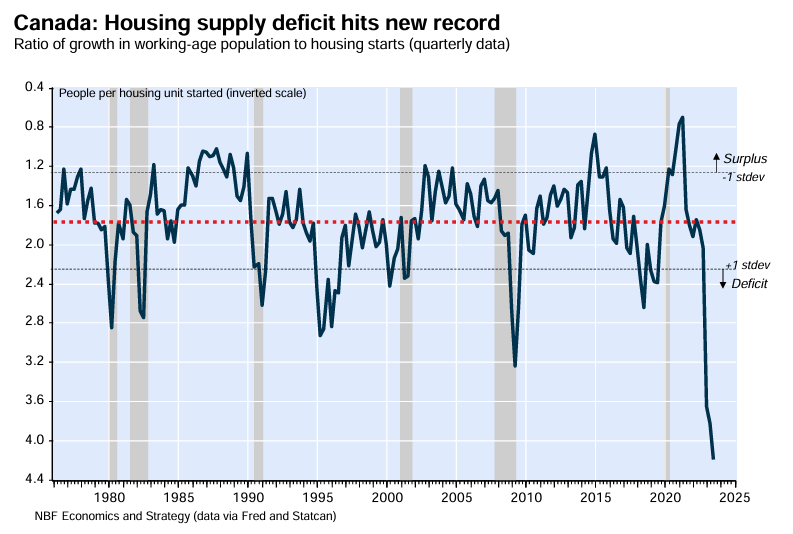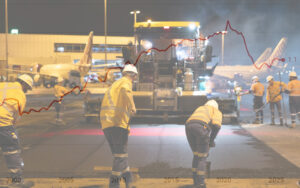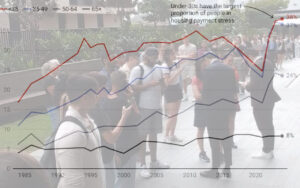Canada is caught in a “population trap” caused by record-high immigration, economists at the National Bank have warned.
According to the Special Report on Economics and Strategy by Stéfane Marion and Alexandra Ducharme, Canada’s population is growing so rapidly that savings levels cannot stabilise the capital to labour ratio, preventing GDP per capita from increasing, a phenomenon usually only seen in developing economies.
The authors defined a population trap as “a situation where no increase in living standards is possible, because the population is growing so fast that all available savings are needed to maintain the existing capital labour ratio.”
A series of graphs in the report show that while Canada’s population increased by 1.2 million (3.2%) in 2023, the housing supply deficit reached a new record, housing construction cannot keep up, GDP per capita has been at a standstill for six years, and capital stock per capita has collapsed.


“We currently lack the infrastructure and capital stock in this country to adequately absorb current population growth and improve our standard of living,” the report found.
“Our policymakers should set Canada’s population goals against the constraint of our capital stock, which goes beyond the supply of housing, if we are to improve our productivity.”
The report also notes that despite the current economic situation, the country’s Finance Minister Chrystia Freeland said last week that “immigration is a huge economic strength and a real driver of our country’s economic growth.
“At a time when all of the industrialised countries in the world are facing huge demographic challenges, Canada has the social capacity to welcome immigrants.”
Canada’s 2023 annual population growth was comprised of 543,000 temporary immigrants, 455,000 new permanent residents, 360,000 births, 123,000 study permit holders, 91,000 work and study permit holders, 32,000 other non-permanent residents, and 15,000 asylum seekers.
There were also 36,000 Canadians who left the country, and 332,000 deaths.


























